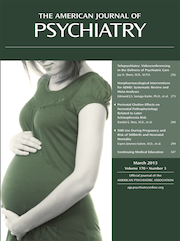In This Issue

Psychiatrists interested in telepsychiatry have a growing body of information and training available (Shore, p. Original article: 256)
The emotional distance imposed by videoconferencing (figure) can be offset by the psychiatrist’s adoption of a more energetic, expressive style. Remote access may actually benefit patients with abuse histories or concerns about confidentiality. Technical recommendations by Shore (p. Original article: 256) include closer framing of the clinician to increase the feeling of contact, minimizing the clinician’s gaze angle, and allowing for transmission delay. Telepsychiatry mandates a low threshold to inquire about alcohol consumption and special attention to safety for patients videoconferencing from their homes. An emergency plan and procedures for filling prescriptions and doing laboratory tests should be determined before meetings begin. The Center for Medicare and Medicaid Service has established “privileging by proxy” for telehealth practice, but some individual states and malpractice insurance carriers have additional requirements.
The only dietary or psychological treatments that improve core symptoms of attention deficit hyperactivity disorder (ADHD) are supplementation with omega-3/omega-6 free fatty acids and elimination of artificial food colorings. Even these effects are small, limited to food-sensitive individuals, or dependent on coadministration of medication. Other meta-analyses by Sonuga-Barke et al. (p. Original article: 275) of blinded studies provided no evidence of improvement from cognitive training, neurofeedback, behavioral interventions, or exclusion of foods associated with hypersensitivity. However, Galanter notes in an editorial (p. Original article: 241) that behavioral treatments may improve symptoms of co-occurring conditions or behaviors specific to the home.
The cluster of cardiovascular and diabetes risk factors known as metabolic syndrome is twice as common among patients with bipolar disorder as among the general population. Antipsychotic medication and greater age further increase the rate. Vancampfort et al. (CME, p. Original article: 265) recommend multiple measurements of waist circumference or body mass index, blood pressure, and fasting levels of glucose, lipids, and cholesterol during the first year of treatment. Patients with risk factors should be encouraged to exercise, make dietary changes, and stop smoking. If lifestyle interventions do not succeed, switching to a lower-risk medication or adding one that reduces weight or metabolic abnormalities may be indicated.
Premenstrual Dysphoric Disorder: Trait Vulnerability?
Women with well-documented premenstrual dysphoric disorder had greater task-related activation in the dorsolateral prefrontal cortex than healthy women, regardless of hormone state. Baller et al. (CME, p. Original article: 305) controlled hormone conditions through ovarian suppression followed by separate additions of estradiol and progesterone. Greater overactivation of the patients’ dorsolateral prefrontal cortex in all three hormonal states correlated with worse baseline functioning and premenstrual symptoms and with earlier age at onset. In an editorial, Epperson (p. Original article: 248) proposes that premenstrual dysphoric disorder is a trait sensitivity made manifest by the premenstrual hormonal state.
Decision Making in Adolescents With Disruptive Behavior Disorders
Reinforcement for decisions has different effects on the brains of adolescents with conduct disorder or oppositional defiant disorder and the brains of healthy youths. White et al. (p. Original article: 315) used participants’ learning curves to calculate their valuations of choices in a decision-making task. Compared to the healthy adolescents, those with disruptive behavior disorders showed less influence of expected value in the ventromedial prefrontal cortex and left anterior insular cortex during decision making. During feedback, the healthy youths showed greater caudate responses to positive than to negative outcomes, but the behavior disorders group had caudate increases when receiving negative feedback. Editorialists Viding and Seara-Cardoso (p. Original article: 253) point out that the familial clustering of disruptive behavior disorders could mean that some disruptive children inherit a biological vulnerability to make poor choices and also receive impaired parental feedback, both of which contribute to their dysfunction.



